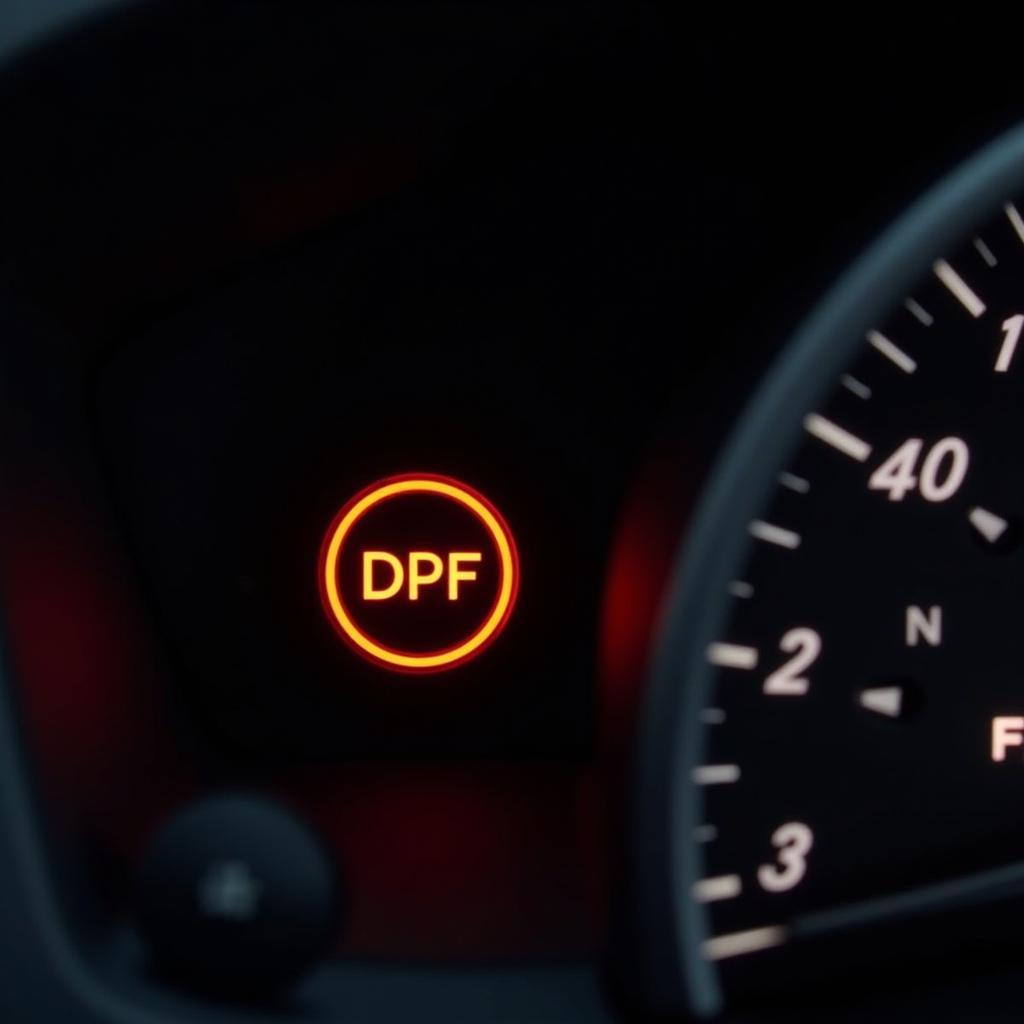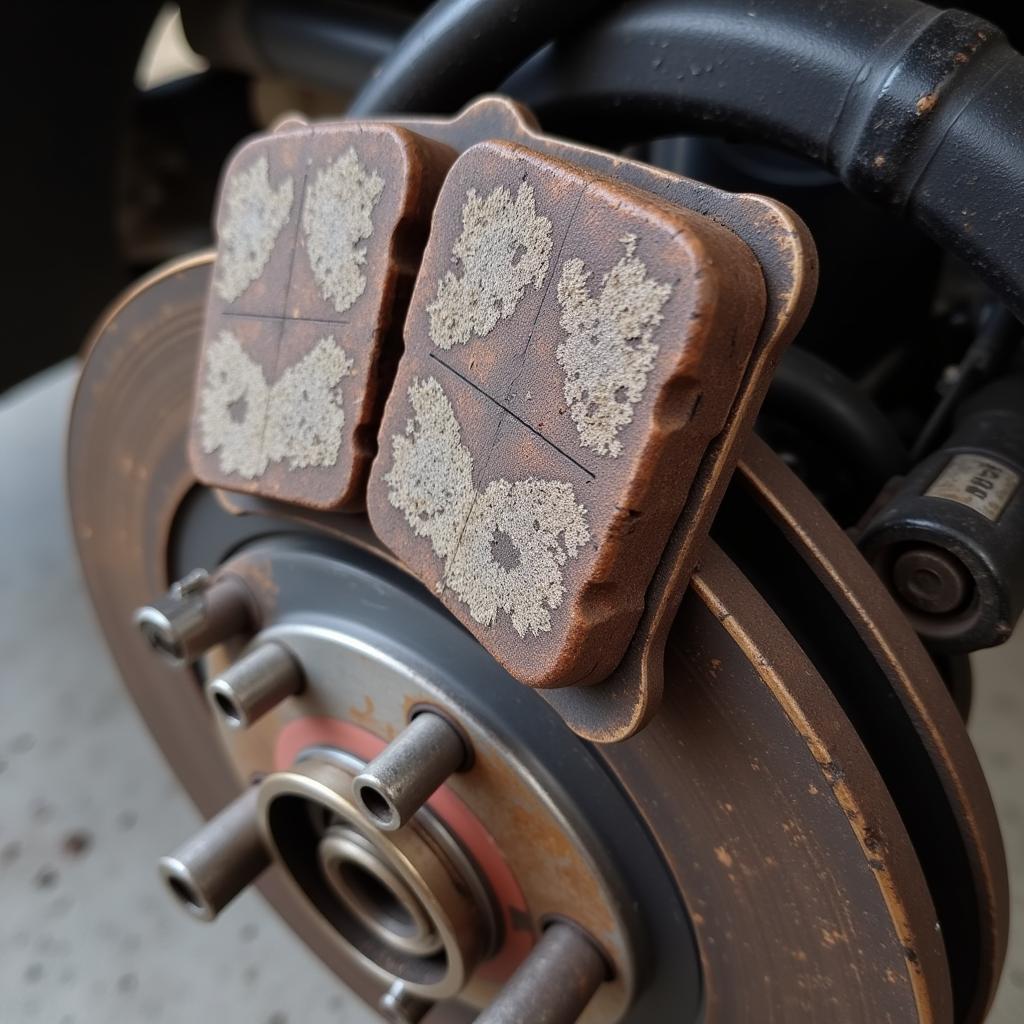If your Seat Leon’s diesel particulate filter (DPF) warning light has illuminated, it signifies a problem with the DPF system. This article delves into the common causes of this warning light in Seat Leon vehicles and provides insights into potential solutions.
 Seat Leon DPF Warning Light on Dashboard
Seat Leon DPF Warning Light on Dashboard
Understanding the Diesel Particulate Filter (DPF)
A diesel particulate filter (DPF) is a critical component of the exhaust system in modern diesel vehicles like the Seat Leon. Its primary role is to capture and store soot (particulate matter) from the exhaust gases, preventing these harmful particles from being released into the atmosphere. Over time, the DPF accumulates soot, requiring a process called “regeneration” to burn off the collected particles and maintain optimal performance.
Common Causes of the DPF Warning Light in a Seat Leon
Several factors can trigger the DPF warning light in a Seat Leon. These include:
1. Frequent Short Journeys
Consistently driving short distances without allowing the engine to reach its optimal operating temperature hinders the DPF regeneration process. The regeneration process requires a specific temperature to burn off the accumulated soot. If the engine doesn’t reach this temperature frequently enough, the DPF can become clogged.
2. Faulty DPF Sensors
The DPF system relies on sensors to monitor its operation, including exhaust gas temperature and pressure sensors. A malfunctioning sensor can disrupt the regeneration process or provide inaccurate readings to the engine control unit (ECU), potentially triggering the warning light.
3. Issues with the Regeneration Process
Problems with the DPF regeneration process itself can cause the warning light to illuminate. This could be due to faulty components like the DPF pressure sensor or a problem with the engine management system that controls regeneration.
4. Faulty DPF
Over time, the DPF itself can become damaged or reach the end of its service life. Physical damage, excessive soot buildup, or a build-up of ash (a byproduct of the regeneration process) can necessitate DPF replacement.
How to Reset the DPF Warning Light on a Seat Leon
It’s important to note that simply resetting the DPF warning light without addressing the underlying issue is not a solution. If the warning light is on, it indicates a problem that needs attention.
However, if you’ve addressed the underlying issue and the light remains on, you might need to reset it. This can often be done using a diagnostic scanner. In some cases, the light might reset itself after a successful DPF regeneration cycle.
Can I Continue Driving with the DPF Warning Light On?
While it might be possible to continue driving for a short period with the DPF warning light illuminated, it is not recommended. Continuing to drive with a clogged DPF can lead to:
- Reduced engine performance
- Increased fuel consumption
- Potential damage to the engine and exhaust system
- In extreme cases, the vehicle might enter a “limp mode” to prevent further damage.
Professional Diagnosis and Repair
Given the complexity of the DPF system, seeking professional help is highly recommended when the DPF warning light illuminates. Our team at Car Diag Tech specializes in remote vehicle diagnostics, programming, and software installation for resolving automotive issues, including those related to the DPF.
We offer comprehensive diagnostics to identify the root cause of your Seat Leon DPF warning light, ensuring the correct repair is performed. Contact us today for expert assistance and to schedule your remote diagnostics session.
FAQs
Q: How often does the DPF need to regenerate?
A: The frequency of DPF regeneration varies depending on driving conditions and the vehicle model. Generally, it occurs automatically every 300 to 500 miles, but this can change depending on your driving habits.
Q: What is involved in a DPF regeneration?
A: DPF regeneration is the process of burning off the accumulated soot in the filter. This usually involves injecting extra fuel into the exhaust system to increase the temperature and initiate the burn-off.
Q: Can I clean my DPF myself?
A: While some DIY DPF cleaning solutions are available, it is generally not recommended to attempt this yourself. Professional cleaning or replacement ensures the job is done correctly and can prevent damage to the DPF or other components.
Q: How long does a DPF last?
A: The lifespan of a DPF varies depending on driving conditions and vehicle usage. On average, a DPF can last around 100,000 miles, but it’s not uncommon for them to last longer with proper maintenance.
Q: What other warning lights could indicate a DPF problem?
A: Besides the DPF warning light, you might also see other warning lights illuminated if there is a DPF issue. These could include the check engine light, the glow plug warning light (if applicable), or an exhaust warning light.
Q: Is it worth getting my DPF removed?
A: DPF removal is illegal in many countries and can have serious legal consequences. Additionally, removing the DPF will negatively impact the environment and could lead to your vehicle failing emissions tests.
We are committed to providing reliable and accurate information about your Seat Leon’s DPF system. Contact us for expert assistance with your Seat Leon DPF warning light, and our team will be happy to assist you. You can also find helpful information about other warning lights, like the Seat Leon FR exhaust warning light or the Seat Leon spanner warning light, on our website. For those interested in exploring issues with other Seat models, you might find our article on Seat Leon Cupra warning lights insightful.


